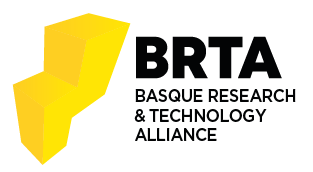A C-ITS Architecture for MEC and Cloud Native Back-End Services
Egileak: Javier Arin Reiriz Paul Bustamante
Data: 01.01.2024
IEEE Access
Abstract
Advances in connectivity and computing infrastructure facilitate the introduction of innovative Cooperative Intelligent Transport Systems (C-ITS) services. However, meeting the requirements of these highly demanding services calls for novel computing architectures that handle extensive device connections, minimize latency, and support multiple resource-intensive services concurrently. To overcome these challenges, this work presents an architecture that comprises three layers: 1) on-board unit (OBU) mainly as a data producer; 2) intermediate edge layer where low-latency backend services can be deployed; and 3) cloud layer for non-real-time backend services. The OBU software stack implements the ETSI C-ITS standard and supports multicast over the cellular network. The edge layer includes an in-memory database, and the cloud layer a persistent database. Each layer has its own Application Programming Interface (API) for data consumption. We conducted several experiments to demonstrate the feasibility of our proposed system that ensures scalability and interconnection between vehicles, edge and cloud servers. We also assess the delay caused by each of the elements of the architecture, and we discuss the potential solutions for the identified issues.
BIB_text
title = {A C-ITS Architecture for MEC and Cloud Native Back-End Services},
journal = {IEEE Access},
pages = {64531-64550},
volume = {12},
keywds = {
5G; C-ITS; C-V2X; cloud; MEC; V2X
}
abstract = {
Advances in connectivity and computing infrastructure facilitate the introduction of innovative Cooperative Intelligent Transport Systems (C-ITS) services. However, meeting the requirements of these highly demanding services calls for novel computing architectures that handle extensive device connections, minimize latency, and support multiple resource-intensive services concurrently. To overcome these challenges, this work presents an architecture that comprises three layers: 1) on-board unit (OBU) mainly as a data producer; 2) intermediate edge layer where low-latency backend services can be deployed; and 3) cloud layer for non-real-time backend services. The OBU software stack implements the ETSI C-ITS standard and supports multicast over the cellular network. The edge layer includes an in-memory database, and the cloud layer a persistent database. Each layer has its own Application Programming Interface (API) for data consumption. We conducted several experiments to demonstrate the feasibility of our proposed system that ensures scalability and interconnection between vehicles, edge and cloud servers. We also assess the delay caused by each of the elements of the architecture, and we discuss the potential solutions for the identified issues.
}
doi = {10.1109/ACCESS.2024.3397467},
date = {2024-01-01},
}







